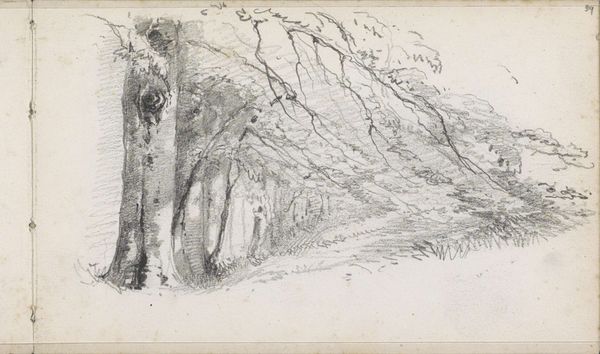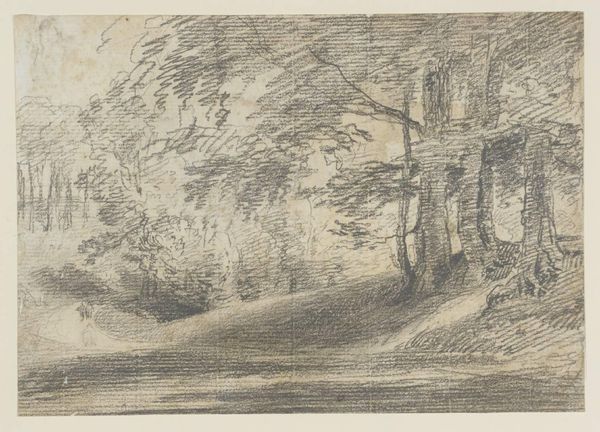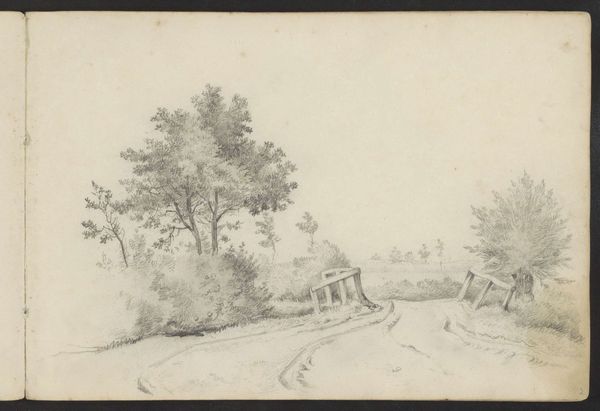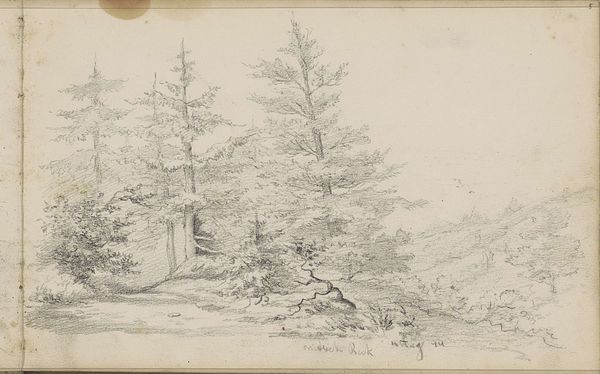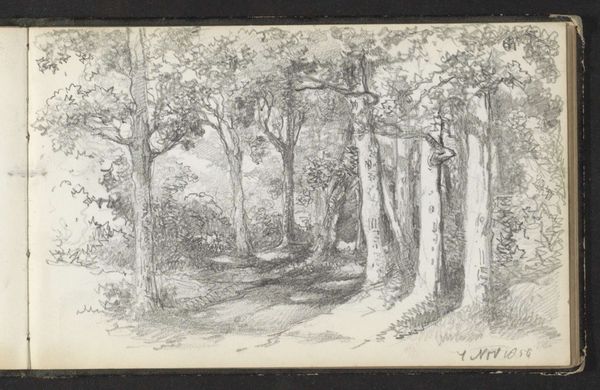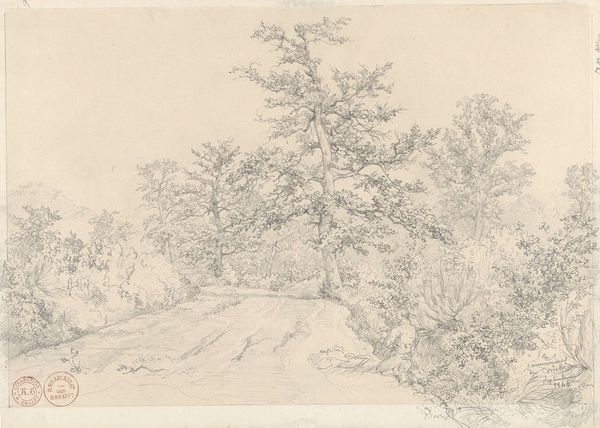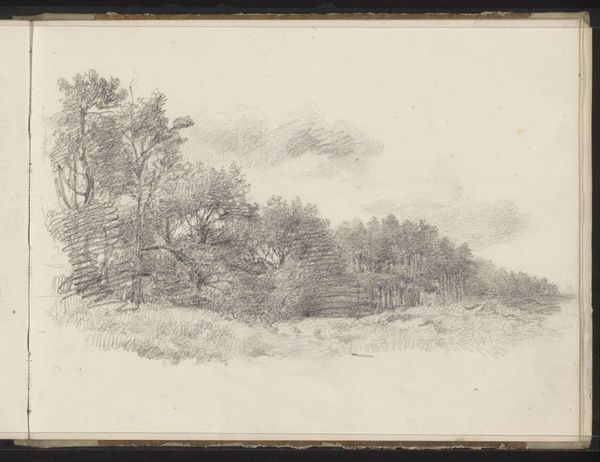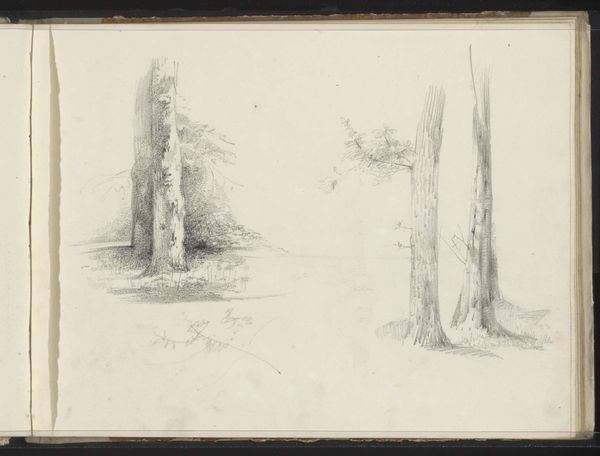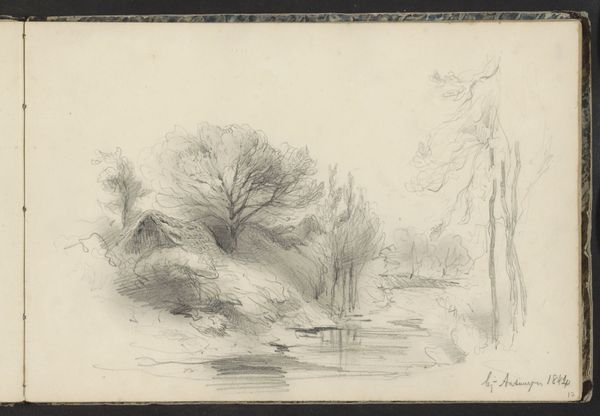
Copyright: Rijks Museum: Open Domain
Curator: This is "Bospad bij Sneppenschrik," a pencil drawing created by Johannes Tavenraat between 1864 and 1868. It’s part of the Rijksmuseum's collection. Editor: My immediate sense is one of quietude. It feels like peering into a hushed, almost dreamlike, space. The soft lines seem to evoke the ephemerality of memory, like a path disappearing behind you. Curator: I think it's crucial to place this piece within the context of 19th-century Romanticism. Nature wasn't just scenery; it was a stage upon which human emotions and experiences played out. Consider the political and social turmoil of the time—industrialization, urbanization—and how that might fuel a longing for unspoiled, natural environments, a sort of yearning for an idealized past. Editor: Absolutely, and those tall, slender trees evoke a sense of almost sacred space, echoing the imagery of classical landscapes, although depicted with an intimate simplicity, rendered as a sketch, seemingly capturing just the essentials. What do you read in these understated visuals? Curator: The path itself acts as a potent symbol. The artist has invited us, the viewers, on a journey. A winding road, a pathway through life’s labyrinth... Is the road accessible to all? Perhaps only to a few privileged enough to have access to land ownership or even just free time? These landscapes rarely reflect the realities of labour. Editor: The symbolism of paths is potent here: in almost every culture, such roads act as allegories of life’s choices and transitions. Beyond the social critiques, do you agree that the overall impression relies significantly on our collective unconscious about forests: shelter, mystery, escape and revelation? Curator: Undoubtedly, Tavenraat’s piece prompts important discussions around land, access, and who gets to experience and represent nature, questions which retain their currency today. Editor: Yes, beyond its romantic allure, the image invites introspection about what, consciously or unconsciously, we expect to see, and whose experience matters. Curator: Precisely, its muted tones belie the many social implications that lie beneath its surface, a vital addition to any nuanced exhibition around landscape art. Editor: Indeed, a simple yet profound meditation on our relationship with the natural world, revealing layers with each contemplation.
Comments
No comments
Be the first to comment and join the conversation on the ultimate creative platform.

